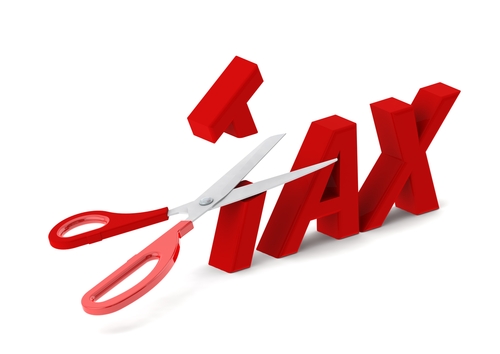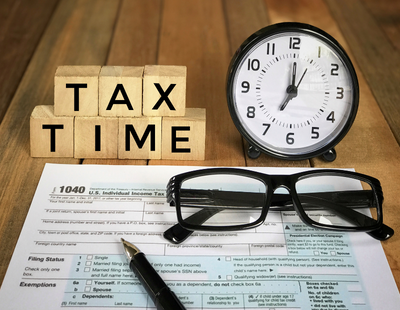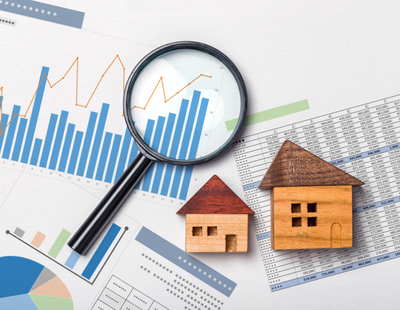Higher earners - In the coming tax year, anyone earning over £60,000 will be worse off when you combine the impact of frozen income tax thresholds with the National Insurance cut. On earnings above the upper earnings threshold of £50,270, they pay a different band of National Insurance, which hasn’t been cut. Over time, as the frozen tax thresholds bite, more higher earners will suffer, so by the end of the freeze, anyone making over £55,000 will be worse off (IFS calculation).
You can bring down your tax bill by considering pension contributions. If your workplace runs a salary sacrifice scheme, you can agree to give up some salary in return for pension contributions. If not, you can still pay into a workplace pension or a SIPP, and save the income tax.
Lower earners - Lower earners are worse off when both the National Insurance cut and frozen income tax thresholds are factored in - because more of them have been pushed into paying income tax – and more of it. Meanwhile, less of their income falls into the bracket where they pay National Insurance, compared to middle earners, so they benefit less from the cut. In the coming tax year, anyone making less than £26,000 will be worse off, and by the end of the freeze, anyone on less than £32,000 will be worse off (IFS).
Pensioners on higher incomes - The smaller the proportion of your income that comes from the state pension, the less you’ll benefit from the 8.5% rise. Meanwhile, those on higher pension incomes are hit by frozen income tax thresholds, which pushes more people into paying more tax. Pensioners don’t benefit from the National Insurance cut, because it’s not paid over state pension age. It means once your household income goes over £80,000, you’re worse off in the coming tax year.
Investors outside an ISA or pension - The dividend tax allowance falls on 6 April, from £1,000 to £500 – down from £5,000 when it was introduced in 2016. This will hit anyone earning dividends on investments held outside tax wrappers – as soon as they exceed the new smaller allowance. An investor with a portfolio of £25,000, who earns dividends at 4% will make £1,000. In the current tax year, they’ll pay no tax, but from 6 April a higher rate taxpayer will pay £169. Investors face capital gains tax misery too. This is paid on profits on investments outside an ISA or pension. The annual allowance is slashed from £6,000 to £3,000 in April, pushing it to its lowest level since the 1980s. If you have investments outside tax wrappers, and the available ISA allowance this year, it’s a no-brainer to move some of them to a more tax-efficient environment. This is straightforward through share exchange – otherwise known as Bed and ISA - but the deadline tends to be slightly earlier than the end of the tax year, so don’t hang about.
Younger savers - If a child in your life is 16 or 17 now, they can have a total of £9,000 paid into their JISA each year until they are 18, but from the age of 16, they also have an additional £20,000 adult cash ISA allowance. It means, their annual ISA allowance rises to £29,000. From 6 April, the minimum age to open a cash ISA will be raised to 18, closing this loophole, so if you want to take advantage, you need to act fast.
Property investors - This is already one of the least-tax efficient ways of investing. From 6 April, the capital gains tax rate on property will fall from 28% to 24%. However, the halving of the capital gains tax allowance means some property investors will still pay more capital gains tax overall. At the same time, the income from rent is still subject to income tax, and with rising rents and frozen tax thresholds, they’ll pay more income tax too.
Higher earning Scots - There’s a new tax band in Scotland from 6 April, known as the advanced rate, paid at 45% on income between £75,000 and £125,140. At the same time, the top rate of tax will rise from 47% to 48%. It’s another blow for higher earners in Scotland, who’ve been squeezed ever-tighter since income tax powers were devolved to Scotland in 2016. You can bring down your tax bill through pension contributions, either through salary sacrifice into a workplace pension, or making additional payments to a workplace pension or a SIPP. It won’t leave you better off today, but it will cut your tax bill and help you build for the future at the same time.
-
Winners
Average pensioners - The bigger the role of the state pension in your income, the more impact the 8.5% rise will have. And while frozen tax thresholds will eat some of this gain, pensioners with a household income under £80,000 will be better off.
Middle earners - Middle earners will benefit from the National Insurance cut, which will save them more than they lose from frozen tax thresholds. In the coming tax year, anyone earning between £26,000 and £60,000 will be better off. By the end of the freeze, the band of winners will narrow to just those earning between £32,000 and £55,000 (IFS).
ISA savers and investors - Saving within an ISA gets more rewarding as the tax environment gets tougher. It gives you the chance to shave higher income tax bills, and deal with cuts to dividend tax and capital gains tax allowances too. However, there are also specific tweaks to ISAs coming from 6 April, to inject more flexibility and simplicity into the system. You will be able to pay into multiple ISAs of the same kind in a single tax year from April, so cash ISA savers can jump on better rates later in the tax year and stocks and shares ISAs no longer run the risk of accidentally opening two and breaking the rules. Within IFISAs you may also be able to access Long Term Asset Funds, which are sophisticated and higher risk investment opportunities in areas like private equity, infrastructure and real estate. IFISAs will also be extended to include open ended property funds. However, we think closed ended funds are a better to get pooled exposure, and they’re available through a stocks & shares ISA.
Parents - The free childcare announced in the Autumn Statement last year will start rolling out. From April 6, working parents of two-year-olds will get 15 hours of free childcare a week. Higher earning parents, making between £50,000 and £80,000, will also benefit from the change to the high income child benefit charge. At the moment, when a parent earns over £50,000, they have to start repaying the benefit – and they’ll lose it all once they make £60,000. From the new tax year, they only start losing the benefit at £60,000 and they lose it at half the pace, so they pay it all back when they make £80,000. It will take 170,000 families out of paying this charge, and overall half a million families with children will save an average of £1,300 a year.*
* Sarah Coles is head of personal finance at the consultancy Hargreaves Lansdown *
Want to comment on this story? Our focus is on providing a platform for you to share your insights and views and we welcome contributions.
If any post is considered to victimise, harass, degrade or intimidate an individual or group of individuals, then the post may be deleted and the individual immediately banned from posting in future.
Please help us by reporting comments you consider to be unduly offensive so we can review and take action if necessary. Thank you.














.png)





Join the conversation
Be the first to comment (please use the comment box below)
Please login to comment